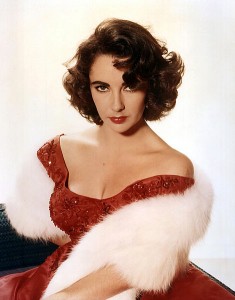Bodacious: “The word is a portmanteau of ‘bold’ and ‘audacious’ that means: remarkable, courageous, audacious, spirited.” – Wikipedia
Elizabeth Taylor marketed her brand expertly. While garnering an audience for books is a little different from garnering audiences for movies, and eager consumers for perfume sales, one lesson is clear: a bit of bodaciousness can take you far!
So how do we build bodacious-ness into our Novel’s opening chapters?
First, let’s look at the overview:
While it is common to think of a Novel as made up of a Beginning, Middle, and End ( or three Acts), it’s actually more helpful for authors to think of Novels as comprised of four Sections: (1 )Beginning, 2) First Half of the Middle, 3) Second Half of the Middle, and 4) Conclusion).
The reason it’s useful for authors to think of the Middle as made up of two distinct parts is because of something called the “Midpoint Shake-up,” (a crucial Milestone in your Novel). I’ll talk about the Midpoint Shake-up in a later post.
For now, let’s talk about Section 1 of your Novel, the Chapters that launch the Beginning of your Story.
We’ve already noted that your Novel should start with a Hook, and should be comprised of Scenes that draw your reader into your Story World.
Section 1 of your novel also should accomplish the following:
- It should be Bodacious. See definition above. Apply.
- Somewhere in the early pages of Section 1, you need to introduce the What Starts It All (also known as The Catalyst, or The Inciting Incident).
- Somewhere, as you near the conclusion of Section 1, you need to introduce the Hero/Heroine’s “Okay, I’m In” Moment (also known as Plot Point 1, or the First Turning Point).
Make your early pages Bodacious,” is just another way of saying: make your novel as readable as your writerly gifts allow. Imbue it with mesmerizing Characters (more about Characterization later), intriguing Action, language “fire-new from the mint,” compelling Story, pitch perfect Tone, so-right Settings, and whatever else you can draw from your wordsmithy Wit to make your Novel a smashing good read.
Einstein said, “Imagination is more important than knowledge. For knowledge is limited to all we now know and understand, while imagination embraces the entire world, and all there ever will be to know and understand.”
A grasp of Technique will speed you on your goal to crafting a Novel that makes for a hugely satisfying reading experience. But it’s your creativity as you exercise your mastery of Technique that will truly make your work stand out. And it’s the possibilities of that same creativity – exercised to a fare thee well – that levels the playing field for all writers; no matter how many established bestselling authors are out there, readers have always, and will always, eagerly seek out and respond to fantastic new authors.
Happy Writing!
Image: Wikimedia Commons

